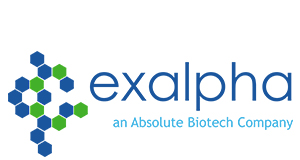Rabbit anti Human Apaf 1 (NT) Apoptosis Activating Protease Fact
Rabbit anti Human Apaf 1 (NT) Apoptosis Activating Protease Fact, Polyclonal, IgG
Artikelnummer
EXAX1118P
Verpackungseinheit
100 µg
Hersteller
Exalpha Biologicals Inc
Verfügbarkeit:
wird geladen...
Preis wird geladen...
Background: Apoptosis is related to many diseases and induced by a family of cell death receptors and their ligands. Cell death signals are transduced by death domain containing adapter molecules and members of the caspase family of proteases. The mammalian homologues of the key cell death gene CED-4 in C. elegans has been identified recently from human and mouse and designated Apaf1 (for apoptosis protease-activating factor 1) (1,2). Apaf1 binds to cytochrome c (Apaf2) and caspase-9 (Apaf3), which leads to caspase-9 activation. Activated caspase-9 in turn cleaves and activates caspase-3 that is one of the key proteases, being responsible for the proteolytic cleavage of many key proteins in apoptosis (3). Apaf1 can also associate with caspase-4 and caspase-8 (4). Apaf1 is ubiquitously expressed in human tissues (1).
Positive Control: Whole HeLa cell lysate.
Immunogen: Synthetic peptide corresponding to amino acids 12 to 28 of the human Apaf-1 protein. The immunogen sequence is identical in human and mouse.
Purification Method: Antigen Immunoaffiinity Purification.
Formulation: Provided in phosphate buffered saline solution containing 0.02% sodium azide as a preservative.
References: 1. Zou, H., Apaf-1, a human protein homologous to C. elegans CED-4, participates in cytochrome c-dependent activation of caspase-3. Cell 1997, 90, 405-13
2. Cecconi, F., et al., Apaf1 (CED-4 homolog) regulates programmed cell death in mammalian development. Cell 1998, 94, 727-37
3. Li, P., et al., Cytochrome c and dATP-dependent formation of Apaf-1/caspase-9 complex initiates an apoptotic protease cascade. Cell 1997, 91, 479-89
4. Hu, Y., et al., Bcl-XL interacts with Apaf-1 and inhibits Apaf-1-dependent caspase-9 activation. Proc Natl Acad Sci USA 1998, 95, 4386-91.
UniProt: O14727 (Human)
O88879 (Mouse)
Q9EPV5 (Rat).
Caution: This product is intended FOR RESEARCH USE ONLY, and FOR TESTS IN VITRO, not for use in diagnostic or therapeutic procedures involving humans or animals.
Positive Control: Whole HeLa cell lysate.
Immunogen: Synthetic peptide corresponding to amino acids 12 to 28 of the human Apaf-1 protein. The immunogen sequence is identical in human and mouse.
Purification Method: Antigen Immunoaffiinity Purification.
Formulation: Provided in phosphate buffered saline solution containing 0.02% sodium azide as a preservative.
References: 1. Zou, H., Apaf-1, a human protein homologous to C. elegans CED-4, participates in cytochrome c-dependent activation of caspase-3. Cell 1997, 90, 405-13
2. Cecconi, F., et al., Apaf1 (CED-4 homolog) regulates programmed cell death in mammalian development. Cell 1998, 94, 727-37
3. Li, P., et al., Cytochrome c and dATP-dependent formation of Apaf-1/caspase-9 complex initiates an apoptotic protease cascade. Cell 1997, 91, 479-89
4. Hu, Y., et al., Bcl-XL interacts with Apaf-1 and inhibits Apaf-1-dependent caspase-9 activation. Proc Natl Acad Sci USA 1998, 95, 4386-91.
UniProt: O14727 (Human)
O88879 (Mouse)
Q9EPV5 (Rat).
Caution: This product is intended FOR RESEARCH USE ONLY, and FOR TESTS IN VITRO, not for use in diagnostic or therapeutic procedures involving humans or animals.
| Artikelnummer | EXAX1118P |
|---|---|
| Hersteller | Exalpha Biologicals Inc |
| Hersteller Artikelnummer | X1118P |
| Green Labware | Nein |
| Verpackungseinheit | 100 µg |
| Mengeneinheit | STK |
| Reaktivität | Human, Mouse (Murine), Rat (Rattus) |
| Klonalität | Polyclonal |
| Methode | Western Blotting |
| Isotyp | IgG |
| Wirt | Rabbit |
| Produktinformation (PDF) | Download |
| MSDS (PDF) | Download |

 English
English






